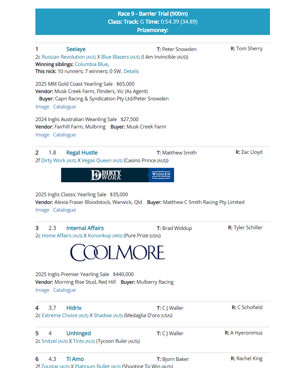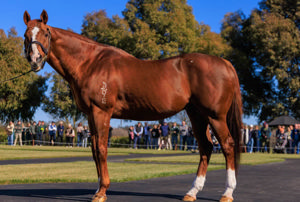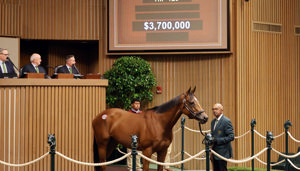To date Government coronavirus relief has been mostly about improving cash-flow to businesses via rebates of PAYG withholding tax, however the next tranche of concessions released yesterday are for the sole objective of providing a direct subsidy to business to enable them to keep employees on the books through this extraordinary period.
This subsidy is paid to eligible employers who can then pay eligible employees. The first payment will be received by employers from the ATO in the first week of May 2020. The registration process for eligible employers is outlined below and registration is now available.
Importantly, this relief is also available to the self-employed. Eligible employees will include those employed by the employer at 1 March 2020, including those who have been stood down. Retrenched workers can be re-hired to qualify for the payment.
As noted by the Treasurer this morning, this $1,500 per fortnight payable to the eligible employer by the Government is taxable. This reflects that their lost revenue would also have been taxable, and any “top-up” wages paid with this relief is tax deductible to them.
Again, there is a lot of detail in this package and I end this article with a helpful example adapted from the Government release, hopefully bringing all of this information together for you.
What is “JobKeeper” payment?
Yesterday a “JobKeeper” payment was announced on by the Government to keep Australians employed.
A JobKeeper payment is a minimum payment ($1,500 per fortnight) the Government will pay to eligible businesses (defined below) to ensure they are able to keep their eligible employees (defined below) employed by them during this period. The Government has committed to a six-month period where this payment will be made.
The Government wants to make sure that when the Covid-19 pandemic is over – Australians will still be employed. Further – it knows that employers will need its employees when this occurs.
From the information available – it appears that the JobKeeper payment will apply as outlined below.
- ELIGIBLE BUSINESSES WHO CAN APPLY FOR THE JOBKEEPER PAYMENTS
All businesses who meet the turnover tests below can now register their interest with the ATO to receive the JobKeeper payment for their employees. This includes self-employed individuals (businesses with no employees).
- Turnover tests for employers
All businesses (including sole traders) can now register their interest to receive the JobKeeper payments for their employees (or themselves if sole traders) if they meet the following turnover tests:
- businesses with a turnover of less than $1 billion where their turnover has been reduced by more than 30 per cent relative to a comparable period a year ago (of at least a month); or
- business with a turnover of $1 billion or more where their turnover has been reduced by more than 50 per cent relative to a comparable period a year ago (of at least a month); and
- the business is not subject to the Major Bank Levy.
- ELIGIBLE EMPLOYEES WHO CAN RECEIVE THE JOBKEEPER PAYMENTS FROM THEIR EMPLOYERS
Eligible employers will be able to receive and pay the JobKeeper payments to the following employees:
- Employees who were employed by you as employees as at 1 March 2020;
- Employees currently employed by you (including those stood down or re-hired);
- Employees who are full-time, part-time, or long-term casuals (to get the payment for a casual employee, they must have been employed by you on a regular basis for longer than 12 months as at 1 March 2020);
- Employees who are at least 16 years of age;
- Employees who are an Australian citizen, the holder of a permanent visa, a Protected Special Category Visa Holder, a non-protected Special Category Visa Holder who has been residing continually in Australia for 10 years or more, or a Special Category (Subclass 444) Visa Holder; and
- Employees who are not in receipt of a JobKeeper Payment from another employer.
Please note - if your employees receive the JobKeeper Payment, this may affect their eligibility for payments from Services Australia (e.g. from Centrelink) as they must report their JobKeeper Payment as income.
- APPLICATION PROCESS FOR BUSINESSES
- Businesses with employees
Employers can to register their interest in applying for the JobKeeper Payment now at this address: https://www.ato.gov.au/job-keeper-payment/
Subsequently, the eligible employers will be able will be able to apply for the scheme by means of an online application.
- Businesses without employees (e.g. Self-employed)
Businesses without employees, such as the self-employed, can register their interest in applying for JobKeeper Payment now via https://www.ato.gov.au/job-keeper-payment/
For verification purposes, businesses without employees:
- will need to provide an ABN for their business;
- nominate an individual to receive the payment;
- provide that individual’s Tax File Number; and
- provide a declaration as to the recent business activity of that business.
People who are self-employed will need to provide a monthly update to the ATO to declare their continued eligibility for the payments.
- EMPLOYER OBLIGATIONS AND COMPLIANCE
The first payment will be received by employers from the ATO in the first week of May.
The payments will be backdated to 30 March 2020.
Eligible employers will need to identify their eligible employees to the ATO who will receive the JobKeeper Payments.
The ATO will be using their STP (Single Touch Payroll) data as part of this process.
Employers will have to provide monthly updates to the ATO.
Participating employers will be required to ensure eligible employees will receive, at a minimum, $1,500 per fortnight, before tax.
It will be up to the employer if they want to pay superannuation on any additional wage paid because of the JobKeeper Payment.
Further details for businesses for employees will be provided.
Payments will be made monthly to the business bank account.
Further details for the self-employed will be provided.
- PAYMENTS MADE TO EMPLOYEES/SOLE TRADERS
Each eligible employee must receive a minimum of $1,500 a fortnight from their eligible employer under this scheme.
- Where an eligible employee was receiving less than $1,500 a fortnight previously, the employer will now pay them the full amount of $1,500 a fortnight (i.e. as the employer will be receiving $1,500 a fortnight from the Government for that employee that they then have to pass on to the employee);
Example
A casual farm hand was originally on $800 per fortnight. This farm hand is an “eligible employee” per the definition above.
The eligible employer will receive $1,500 from the Government for that employee. To get that casual to $1,500 per fortnight, the employer will top-up their pay by $700 per fortnight ($800 plus $700 = $1,500). The employer will keep the $800 not used for the employee “top-up” for cash-flow purposes, in recognition of their greater than 30% loss in revenue.
Note – as noted above, the employer need not pay superannuation on the $700 top-up noted above.
- Where eligible employees were previously earning more than $1,500 a fortnight before tax, it is up to the employer to continue to provide them with the difference in their salary (i.e. the difference being their original salary less the $1,500 a fortnight). The employer will receive $1,500 a fortnight for that employee regardless, that the employer is then obliged to then pass on to that employee as a minimum payment; and
- Where eligible employees were previously earning exactly $1,500 a fortnight, nothing will change. The employer will continue pay their employee $1,500 a fortnight and receive $1,500 from the Government for that employee at the same time.
Example 1 – Employer with employees with different wages
Nicole owns an agistment and pre-training property with two employees. The business is still operating at this stage, but Nicole expects that turnover will decline by more than 30 per cent in in the coming months. The employees are:
• Craig, who is a permanent full-time employee on a salary of $3,000 per fortnight before tax and who continues working for the business; and
• Irma, who is a permanent part-time employee on a salary of $1,000 per fortnight before tax and who continues working for the business.
Nicole is eligible to receive the JobKeeper Payment for each employee, which would have the following benefits for the business and its employees:
- The business continues to pay Craig his full-time salary of $3,000 per fortnight before tax, and the business will receive $1,500 per fortnight from the JobKeeper Payment to subsidise the cost of Craig’s salary and will continue paying the superannuation guarantee on Craig’s income; and
- The business continues to pay Irma her $1,000 per fortnight before tax salary and an additional $500 per fortnight before tax, totalling $1,500 per fortnight before tax. The business receives $1,500 per fortnight before tax from the JobKeeper Payment which will subsidise the cost of Irma’s salary. The business must continue to pay the superannuation guarantee on the $1,000 per fortnight of wages that Irma is earning. The business has the option of choosing to pay superannuation on the additional $500 (before tax) paid to Irma under the JobKeeper Payment.
Nicole can register her initial interest in the scheme from 30 March 2020, followed subsequently by an application to ATO with details about his eligible employees. In addition, Nicole is required to advise her employees that she has nominated them as eligible employees to receive the payment. Nicole will provide information to the ATO on a monthly basis and receive the payment monthly in arrears.
Example 2 - Employer with employees who have been stood down without pay
Kate runs a beauty salon in Melbourne. Ordinarily, she employs three permanent part-time beauticians, but the government directive that beauty salons can no longer operate has required her to shut the business. As such she has been forced to stand down her three beauticians without pay.
Kate’s turnover will decline by more than 30 per cent, so she is eligible to apply for the JobKeeper Payment for each employee, and pass on $1,500 per fortnight before tax to each of her three beauticians for up to six months. Kate will maintain the connection to her employees and be in a position to quickly resume her operations.
Kate is required to advise her employees that she has nominated them as eligible employees to receive the payment. It is up to Kate whether she wants to pay superannuation on the additional income paid because of the JobKeeper Payment.
If Kate’s employees have already started receiving income support payments like the JobSeeker Payment when they receive the JobKeeper Payment, they will need to advise Services Australia of their new income.
The draft legislation is not yet available.
We will be in contact with any updates when we receive further information.
Prepared by:
PAUL CARRAZZO CA & MARIA COLEMAN CA
CARRAZZO CONSULTING PTY LTD
801 Glenferrie Road, Hawthorn, VIC, 3122
TEL: (03) 9982 1000
FAX: (03) 9329 8355
MOB: 0417 549 347
E-mail: paul.carrazzo@carrazzo.com.au or maria@carrazzo.com.au
Web: www.carrazzo.com.au










